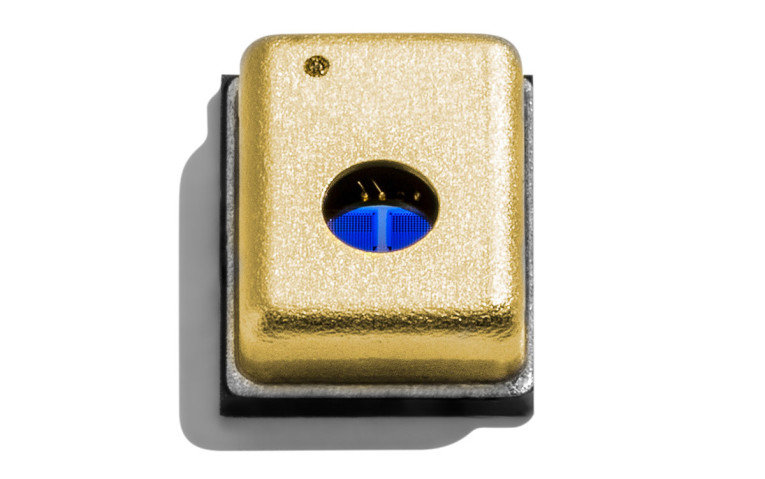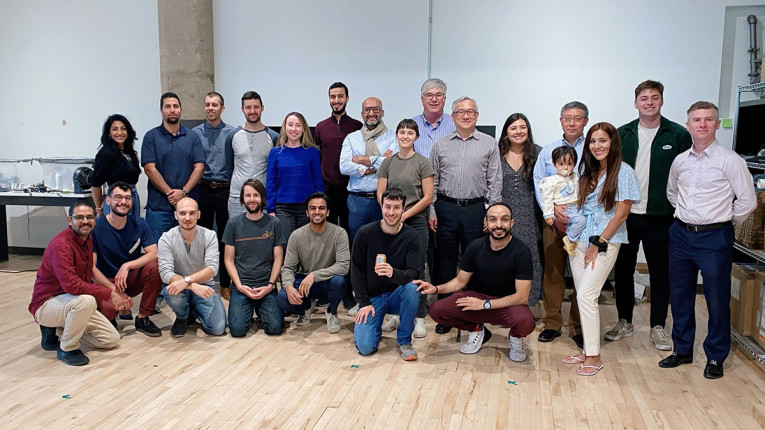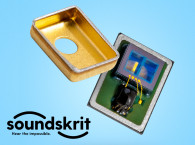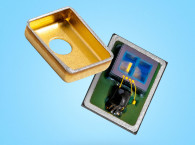Anyone who has used these devices to conduct a video or phone call (including you, reader) knows that interference is almost a guarantee. Background chatter, dogs barking, conversations unfolding right beside you, a siren screaming down the street... there's no limit to the distractions you might encounter while trying to have a simple conversation.
In addition to the conversations that we have every day, the performance of voice-activated devices also suffers when background noise comes into play. If a smart home system can’t discern what you’re trying to say, it won’t be able to deliver the results you want. Thus, it turns a device that’s meant to deliver convenience into a source of frustration.
What is the source of these sonic roadblocks? Why is it so hard to escape them? The answer is simple: omnidirectional microphones are not well-suited for everyday use. Yet, they are found in all the personal devices we use to conduct our lives.

Soundskrit is the company behind the world's smallest directional microphone. Hailing from Montreal, Canada, the startup I co-founded has cracked the code on eliminating unwanted noise at the hardware level – a never-before-seen feat for consumer product integrations.
Our flagship product, the SKR0400 microphone, is a tiny MEMS microphone that does more than just remove audio interference: It does not record it in the first place. It features a dipole, or figure-8, pickup pattern that is designed to block out background noise and reverberation, isolating a user’s voice with high fidelity. Unlike alternative omnidirectional microphone arrays, it maintains very consistent directionality across the entire audio spectrum, meaning it can cancel out all types of environmental noise. It accomplishes all of this while maintaining very high SNR performance, compared to traditional microphone arrays that have a fundamental tradeoff between directionality and SNR. The SKR0400 doesn’t have the same tradeoff – it accomplishes both flawlessly.
Soundskrit first demonstrated the concept at CES 2018 with a prototype that was about as large as a shoebox. It was a rudimentary model and fairly unpolished, but even then, it generated a huge amount of buzz and excitement among attendees and industry professionals. In 2019, the company brought on several semiconductor experts in the semiconductor industry. Over the last couple of years, the team successfully miniaturized its very first shoebox-looking prototype into a small chip.
This chip can be manufactured at scale. It is no bigger than the traditional microphones found in consumer devices today. By eliminating the need for large omnidirectional microphone arrays, the SKR0400 is a small, low-power, and lightweight solution that offers exceptional performance – perfect for integrating into today's slim and compact form factors. This groundbreaking technology is poised to change the game, reshaping how audio is built and experienced by everyday people.

There is an increasingly popular trend of AI being used to improve audio call quality. While traditional AI systems have gotten fairly good at differentiating speech from background noise (then removing anything that is not a human voice), they often struggle to eliminate secondary sources of speech.
Let's say you're taking a video call from your laptop when someone next to you starts their own conversation. A traditional AI system will classify the secondary voice as desired speech and pass it through to the person on the other side of your line – even though that's the exact opposite of what you'd want.
At Soundskrit, we are training our own AI systems with directionality in mind. By pointing directional microphones towards different orientations and feeding the inputs to the AI, we are providing far richer and more diverse information than a couple of omnidirectional microphones.
As a result, the AI knows to only deliver sounds that are identified as speech AND coming from the appropriate direction. In the example above, the microphones will pick up some of the sound from the conversation next to you. However, their voices will not be passed on because they're speaking in a different direction. The AI is very skilled at deriving meaning from diverse information like this – that's how we are making it smarter every day.

Sahil Gupta, Stephane Leahy, and me (Frederic Lepoutre) – Soundskrit’s founders – met at an incubator based out of Montreal. At the time, we were all scouting for unique tech innovations coming out of universities that could revolutionize consumer electronics. Each had a deep passion for audio and hardware, and was looking to build a company in the space.
Frustrated by all the terrible audio experiences being delivered by everyday devices, we were determined to find a better way forward. Eventually, we connected with Ron Miles: a University of Binghamton professor who has spent the last 30 years building better microphones to improve audio capture. During his research, he turned to nature to better understand how such powerful biological mechanisms can exist in such small form factors – animals, insects, etc.
As it turns out, almost all of nature's smallest auditory systems use a completely different methodology for sensing sound compared to humans. Instead of traditional “ears,” they use the hairs on their body. As air flows across these hairs – essentially, a million tiny directional mechanisms – they can detect where a sound is coming from. You can read the whole story here.
Based on this concept found in the animal and insect kingdoms, Soundskrit engineered the SKR0400. It has now been dubbed a bio-inspired microphone.

We have conducted vast quantities of research and have benchmarked the SKR0400 microphone extensively. To quantify our findings, we used Mean Opinion Score (MOS). This scale ranges from 0 to 5: 0 represents very poor-quality audio, while 5 represents audio that is not degraded and sounds just like clean speech.
For one particular test, we integrated our microphones into a laptop for proof of concept. The goal was to improve the user experience during hands-free video calls – namely, improving voice pickup quality using a built-in mic. It's not always necessary to use headphones or earbuds. The laptop's existing mic must also be able to deliver flawless audio, especially when taking a call at home or in a private office.
One way we tested the mic’s functionality was putting the system under a standardized test bed. We simulated realistic background noise using multiple loudspeakers playing different sounds, each one scattered in a different location within a controlled lab environment. We also placed an artificial audio source in the same spot as a typical user would sit, then mimicked a human voice using test utterances.
To compute Soundskrit's MOS score versus traditional microphones, we compared our system's recordings against a clean recording. For example, the sound emanating from the artificial human voice source, which is noiseless, reverberation-less, and generally ideal.
We found that our technology scored significantly higher than laptops that are currently on the market. This proved the perceptual quality of our system's recordings are markedly higher than the competition.

Riding the wave of public interest, Soundskrit is scaling up quickly. We’ve moved into a larger office that’s twice the size of our previous space, and we’re actively hiring field applications engineers (FAE) and software/algorithm specialists.
The new FAEs will help us teach customers how to switch from omnidirectional microphone arrays to Soundskrit technology, enabling us to conquer the hurdle of product evangelization. They will additionally be focused on explaining to customers why they no longer need to maintain a certain amount of space between microphones thanks to our technology, and to help them think of new ways they can architect their audio systems when using directional microphones as the core building block.
In addition to expanding our footprint and hiring new experts, we are sharpening our go-to-market strategy. We are moving our production line from a university lab to a large-scale MEMS facility, overcoming daily challenges related to migrating our manufacturing to new machinery and training new engineers on the process, and developing our production test systems and methodologies.
Finally, we are currently adapting our algorithms to run on many different types of platforms. We are targeting low-power chips so our AI can be run on devices such as wireless earbuds and headsets without significantly impacting their battery life.
Soundskrit will be exhibiting at CES 2023 (Booth: 51168) and we're looking forward to demonstrating our technology. Reach us at contactus@soundskrit.ca
Or visit the website www.soundskrit.ca
 About the Author
About the AuthorFrederic Lepoutre is co-founder and Software Lead at Soundskrit. Passionate about music and sound, Frederic grew up in Paris and studied electrical and computer engineering at École Nationale Supérieure de l'Électronique et de ses Applications (ENSEA), then continued his studies at Georgia Tech in the US in 2015, where he got his Master’s degree. Frederic later joined Devialet, then an audio start-up from Paris where he developed expertise in acoustic signal processing applied to loudspeakers and microphone arrays. As the company grew from 50 to 400 people, raising 100M Euros along the years, Frederic was involved as both a researcher and an application engineer, scouting new technologies and working on proof of concepts. He worked on proprietary sound enhancing algorithms for the pro audio and home audio market, and worked with the company's licensing partners in the automotive and consumer electronics market. Frederic joined Soundskrit in August 2018 as a co-founder, leveraging his experience to develop systems and applications that showcase the unique abilities of Soundskrit's sensors, through the development of software and proprietary algorithms. In his free time, Frederic likes to play drums with his band and produces rock music.
This article was originally published in The Audio Voice newsletter, (#400), December 1, 2022.






